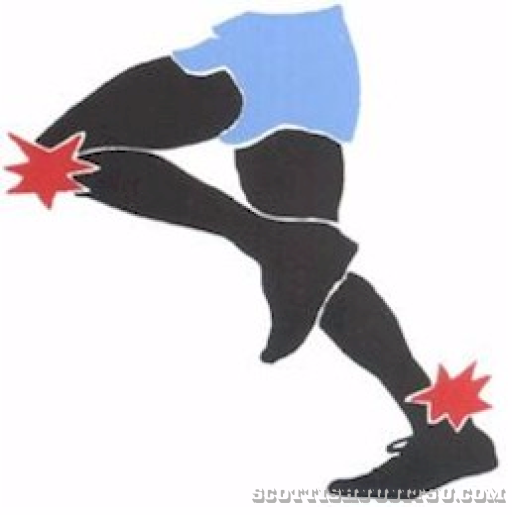Category: Biomechanics
Resistance training and children do not often make the best marriage for a number of reasons but as part of a sport specific programme, sometimes resistance training is an important feature.
Rather than be perscripti9ve, this article hopes to raise questions and concerns as well as provide information in order that a correct determination be made as to when and whether children should use resistance equipment.
The first questions, which will concern parents, local authorities and most facility owners, is; at what age can young people be entrusted to use resistance equipment safely and should this use be supervised?
Safety & Coaching
Resistance equipment was never build for children to use. It was manufactured with adult use in mind. It is therefore important to consider whether the apparatus is suitable for children. The inappropriateness of the equipment may lead to unnecessary long or short-term injuries (see physiological dangers). The same applies to cardiovascular equipment although treadmills are less likely to pose as much danger as resistance equipment such as free weights, racked weights and isokinetic machines.
The child must have a clearly understanding of what they require of the equipment and also be alert to the dangers of using it. It may be questionable as to whether young children have this capacity of understanding and responsibility. During all sessions, which should be between 20 – 40 minutes, young people should be supervised to ensure that technique is properly learned and that positive attitudes are developed. Supervision should also give some protection from the dangers of the ‘steroid scene’ which is a major concern in sport. The environment should be conducive to they child’s safety and enjoyment and send out the right signals about goals and expectations of the programme.
Children should not be expected to perform as adults. They are not mini-adults, despite how mature they behave, they are ill equipped to handle the responsibility placed on individuals using equipment in weights gyms.
All young persons should have specific goals in mind when using weights. It may be:
- to make gains in strength or
- to change their physical shape.
A properly planned and balanced programme, monitored and evaluated regularly is necessary to ensure that resistance training is effective. Young people should really not be encouraged to use this equipment without correct direction, otherwise it may be a recipe for litigation.
The use of spotters is another important issue. Spotters are individuals that assist the training person, be they child or adult. They know at what point in a technique when assistance should be given. They also know the signs of stress and fatigue and give appropriate advice accordingly.
Physiological Concerns
Coaches share the concerns regarding injuries in training children with weights. Correct programming will minimise this. It is fair to say that most injuries with coached children are due to incorrect warm up sessions that lead to muscle strain or inappropriate programmes.
Other likely injuries to young frames are:
- Fractures particularly stress fractures and sited at the Epiphyses (growth plates).
- Spinal problems the accentuation of any of the spines curvatures can cause a lordosis or kyphosis in the spine. Scollitic spinal injuries (twisting of the spine) can be the result of imbalances in training programmes.
- Cartilage problems may occur with short-range repetitive movements
- Ligament injuries are likely when the loads are excessive and joints taken beyond their normal range as a consequence. Ligaments of the joint stability and this will be compromised if the loading is too great. The mechanism of injury here can be indirect, i.e. not caused directly by the equipment but by the body’s attempts to control the load.
Perhaps a more important outcome is the behavioural development of an active lifestyle in a child’s younger years. Maturation cycles of boys and girls will differ as will growth rates. Children will therefore have different genetic potentials, which alone will determine physical differences in children.
What may be appropriate for pubescent young people will be inappropriate for prepubescent children.
Conclusions
Supervised training of children and the use of resistance equipment (including treadmills) is nothing new to coaches. In the last 10 years or so it has gained acceptance and popularity among educational, medical and scientific professionals even although it remains a controversial subject.
When making a determination the answers to the following questions may give some direction:
1. Is the child physically ready to participate in weight training?
2. Does the young person understand the proper lifting technique?
3. Will there be spotters available?
4. With the spotter understand and recognised the correct parts of the technique at which they must intervene?
5. Does the equipment fit the child? Is it suitable for the use?
6. Does the child understand the safety concerns for each piece of equipment?
7. Is the programme for the child balanced with other sports e.g. cross training etc.?
Weight training for children and young persons can be safe if it is carried out properly. Yes, there are dangers and many of them can be eradicated with common sense and good coaching practice.
The following chart is a guideline offered by the Scottish Ju Jitsu Association
AGE CONSIDERATIONS
5 – 7 Introduce the child to basic exercises with little or no weight; develop the concept of a training session; teach exercise technique; progress from body weight callisthenics, partner training and lightly resisted exercises. Keep the volume low.
8 – 10 Gradually increase the number of exercises; practice exercise techniques for all lifts, start gradual; progressive loading of exercises, keep exercises simple, increase volume slowly; carefully monitor tolerance to exercise stress
11 – 13 Teach all basic exercise techniques; continue progressive loading of each exercise, emphasise exercise technique; introduce more advanced exercises with little or no resistance.
14 – 15 Progress to more advanced resistance exercise programmes; add sport specific components; emphasise exercise technique; increase volume.
16 years and over Entry level into adult programme after all background experience has been gained

